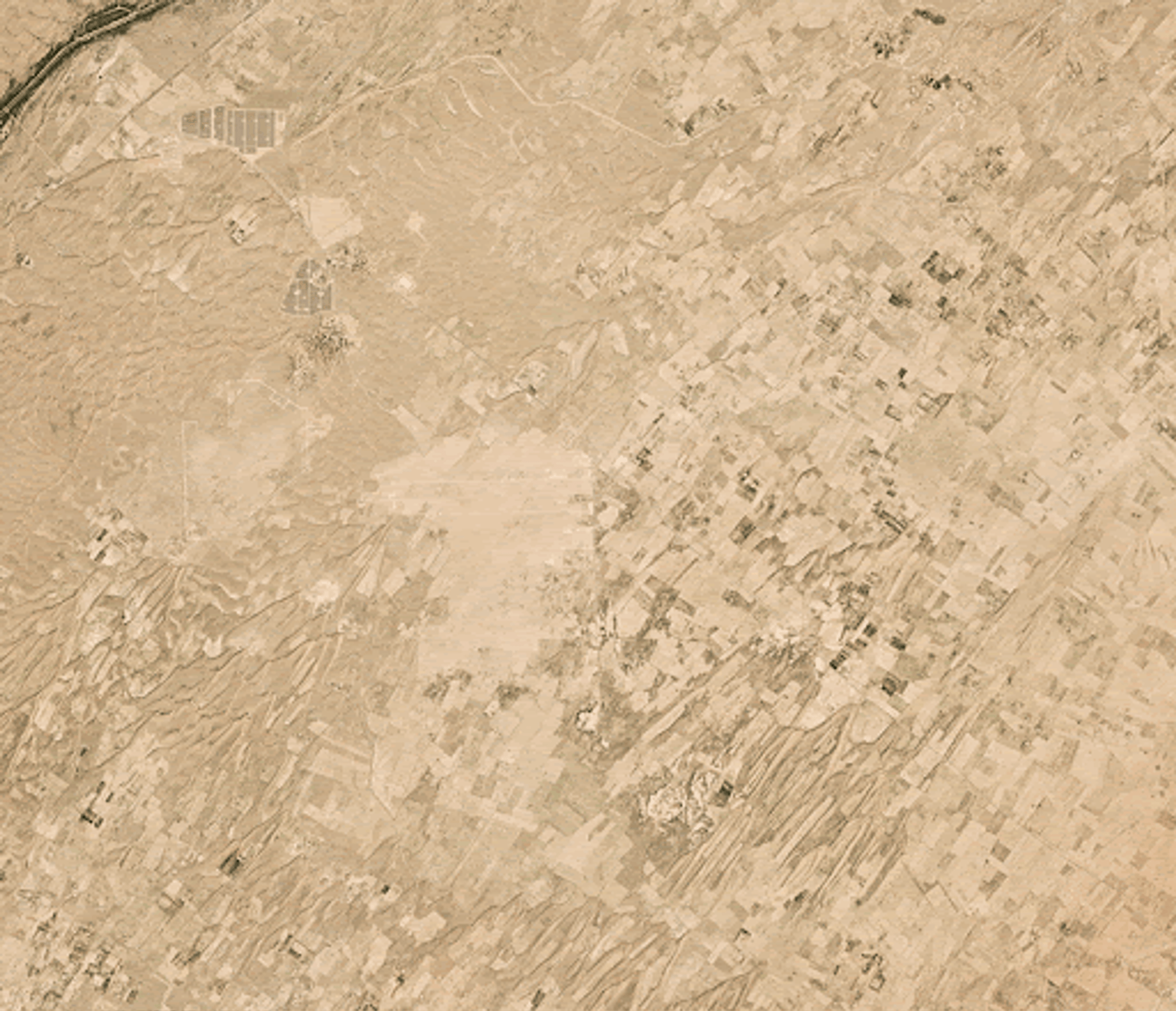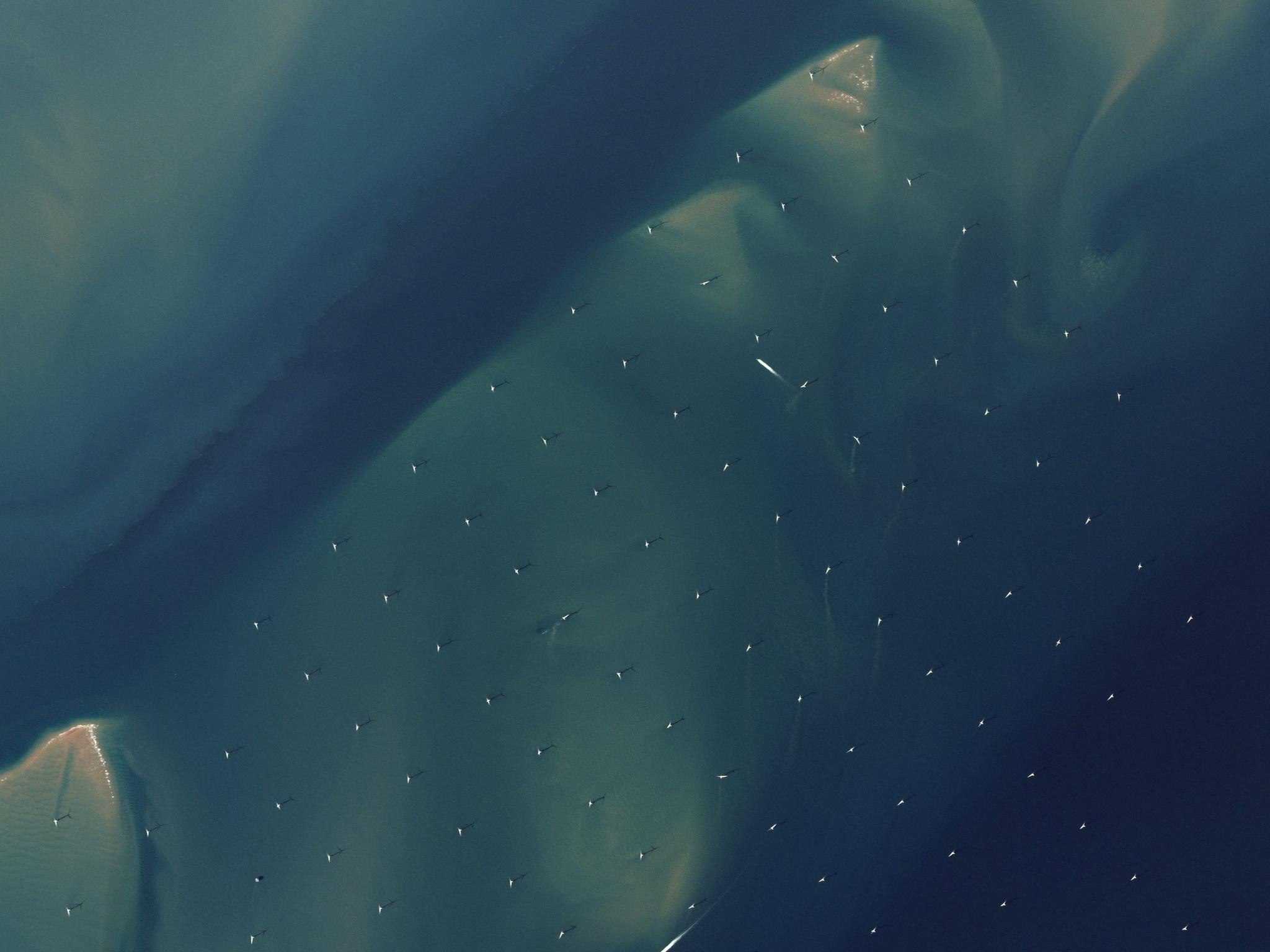This atlas wants to map every solar and wind source in your country
Instead of time-consuming human surveys, these living maps are made by AI and satellites to help planners get things done
It’s easy to spot a wind turbine or solar array from the window of your car, but counting each installation across the world is quite a different story. And since neither the Paris Agreement nor the United Nations Sustainable Development Goals can possibly be fulfilled without a broad adoption of renewable energy sources, having a comprehensive global system for independently assessing and monitoring the growth of those resources in real-time is critical.
But how to create one?
No spoilers here – solar panels work best when exposed to light, which makes them pretty easy to spot from orbiting satellites.

PlanetScope • Bhadla Solar Park, India • 2017 - 2022
So if satellites can monitor change over time in everything from deforestation to crop health, and models can be trained to recognize shapes of buildings or cars, engineers at Microsoft’s AI for Good lab thought – why not solar output? Why not wind? And why not track how those installations are changing the land they’re sited on, too?
Enter the Global Renewables Watch (GRW), a first-of-its-kind living atlas intended to map and measure all utility-scale solar and wind installations on Earth using AI and satellite imagery to allow users to evaluate clean energy transition progress and track trends over time. Not only will it show energy capacity (and gaps), but also how development is changing the landscape, for example, if renewable projects are being sited on farms, grasslands, etc.
Here are 5 things to know about this ambitious project:
- It wants to map the world - Building on established, peer-reviewed scientific approaches, GRW piloted the atlas by completing solar and wind Germany and India, and solar maps of Brazil and Egypt, and intends to debut the first full global edition in early 2023.
- It’ll be a time series, not a snapshot – GRW plans to monitor progress and trends over a period of time vs. a moment in time. Progress will be tracked dating back to 2018.
- It’s going to be regularly updated – What’s a time series if it’s only done once? GRW intends to release bi-annual updates to the atlas so data is fresh for decision-makers.
- It's slated to be available widely – GRW wants to democratize the data, making the data and findings available to policymakers, researchers and the public so it can be integrated into wider analyses.
- It won’t just tell you what you have, but what you need to know – Because of its granularity, decision makers will be able to see the underlying patterns driving renewable energy development, and importantly, to see if any of that development may cause conflicts (like if it’s displacing wildlife species or taking up valuable cropland). That way, planners can provide alternative development solutions to reach renewable energy targets sans environmental conflict.
A tool like this takes deep technical and analytical expertise – so combining AI from Microsoft, a rich archive of high-resolution satellite imagery from Planet and deep subject matter expertise from The Nature Conservancy to help understand the energy impact is at its core.
“Change over time is the headline of this story,” said Andrew Zolli, Planet’s Chief Impact Officer about the project’s value-add. “We can do this because we have this level of granularity - in time and space - via satellite imagery.”
“We hope the Global Renewables Watch will illuminate the footprint, growth, and future potential of renewable energy for every country and region in the world,” Zolli continued. “It will help us understand the impact of renewables on the environment and optimize their placement in ways that meet the needs of both people and nature.”

Ready to Get Started
Connect with a member of our Sales team. We'll help you find the right products and pricing for your needs


